Cattolica di Stilo sits perched on a hillside in Calabria, Italy. Photographers from all over the world get drawn in by this stunning example of Byzantine architecture.
This 10th-century church has five domes arranged in a cross pattern, making a bold silhouette against the Mediterranean sky. The geometric harmony of the terracotta domes and the dramatic hillside location create a scene that’s just irresistible to photograph.
Honestly, I stumbled on this place while poking around the less-touristy parts of Italy. The church isn’t just photogenic because of its age or beauty—it’s the way the light keeps changing, hour by hour.
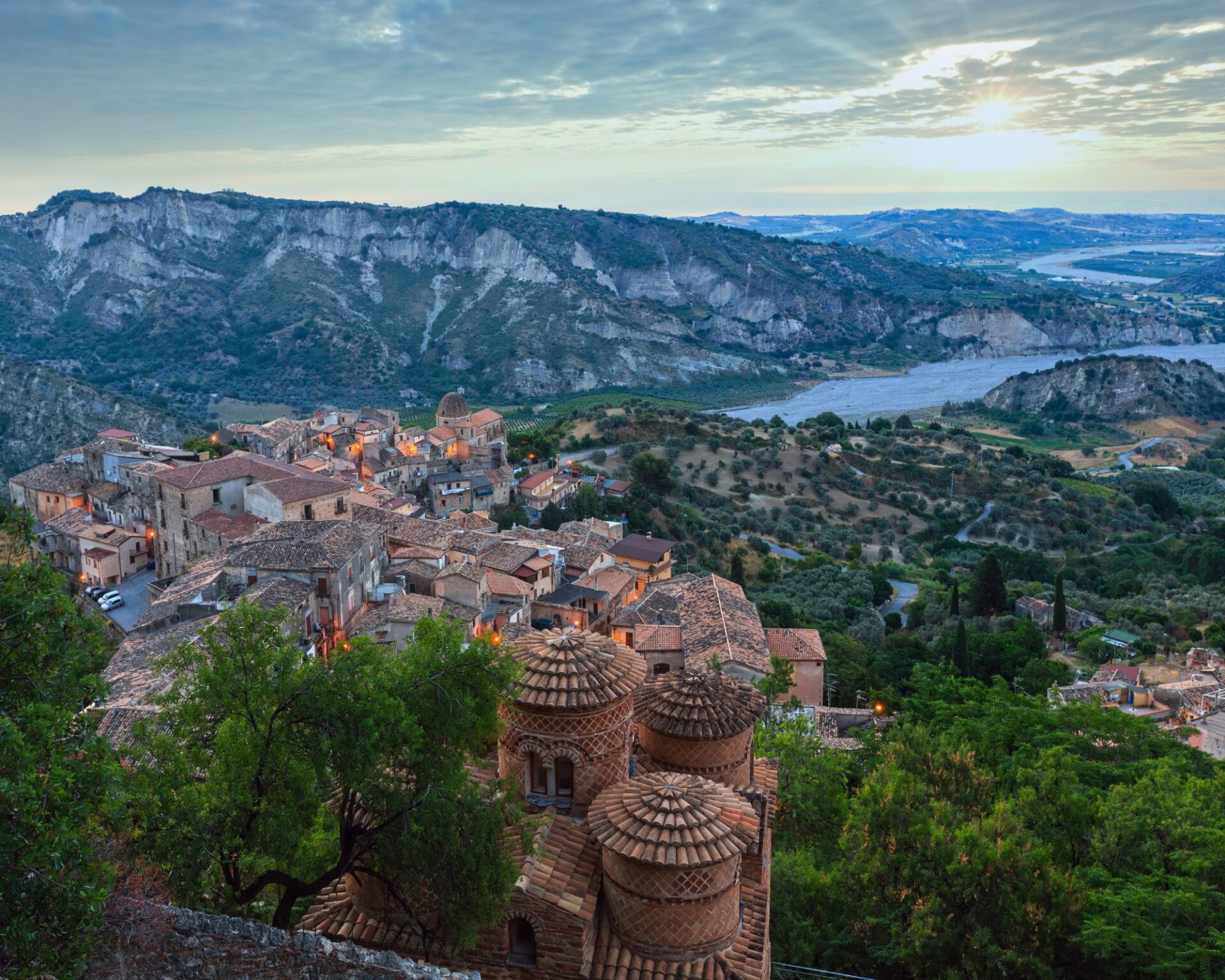
Morning sun spreads a golden warmth over the domes, and sunset throws long, moody shadows that highlight every curve and angle. Inside, you’ll spot faded frescoes that whisper about the church’s former glory.
Stilo’s Cattolica doesn’t get swamped by crowds, unlike most Italian landmarks. Photographers have the freedom to wander, experiment, and wait for that perfect shot.
The landscape around the church opens up all sorts of possibilities—close-up details, wide views, and that classic harmony of architecture and rugged Calabrian hills. If you’re planning a visit, I’d say aim for early morning or late afternoon. That’s when the ancient brickwork really glows.
Stilo’s Byzantine Jewel: History and Significance
High on the hillside, Cattolica di Stilo stands as one of southern Italy’s most remarkable Byzantine monuments. Its five domes, silhouetted against the sky, hint at stories of cultural exchange, devotion, and architectural brilliance.
Origins and Construction Timeline
Byzantine influence shaped Calabria in the tenth century, and that’s when monks from the East built the Cattolica di Stilo. I found out on my first visit that this church marks a time when Orthodox traditions thrived here.
Construction probably happened between 950 and 975 CE, though some say it could be even older. I still can’t believe this small church survived centuries of earthquakes and invasions.
The name “Cattolica” doesn’t mean Roman Catholic—it comes from the Greek “katholiki,” meaning universal. The church started as a gathering place for Byzantine monks who settled in these remote hills.
The Five Domes: Symbolism and Design
Those five domes instantly catch your eye. They symbolize Christ at the center, surrounded by the four Evangelists.
The domes sit in a quincunx pattern—four around a central one—following the cross-in-square design that was all the rage in late Byzantine architecture.

Each dome sits on a square base, thanks to the clever use of pendentives. Four columns inside hold up the domes and divide the space.
What blows me away is how the builders used local materials but pulled off such sophisticated techniques. Light streams through the domes, shifting the atmosphere inside as the day goes on.
Religious and Cultural Legacy
Step inside and you’ll spot traces of original Byzantine paintings clinging to the walls. I could just make out archangels and saints, their colors faded but still there after all these centuries.
These frescoes date from the thirteenth and fourteenth centuries, layered over time by different artists. Archaeologists found that the Cattolica once belonged to a larger monastic complex.
The building served as a cultural bridge between East and West, keeping Orthodox traditions alive in a region that later became mostly Catholic.
Today, the church still draws both pilgrims and tourists. I watched visitors stand in quiet awe, soaking in the atmosphere.
Its presence on the hillside shows just how resilient Byzantine culture remains in this corner of Italy. And those five domes? They’ve become a symbol of Calabria’s layered history.
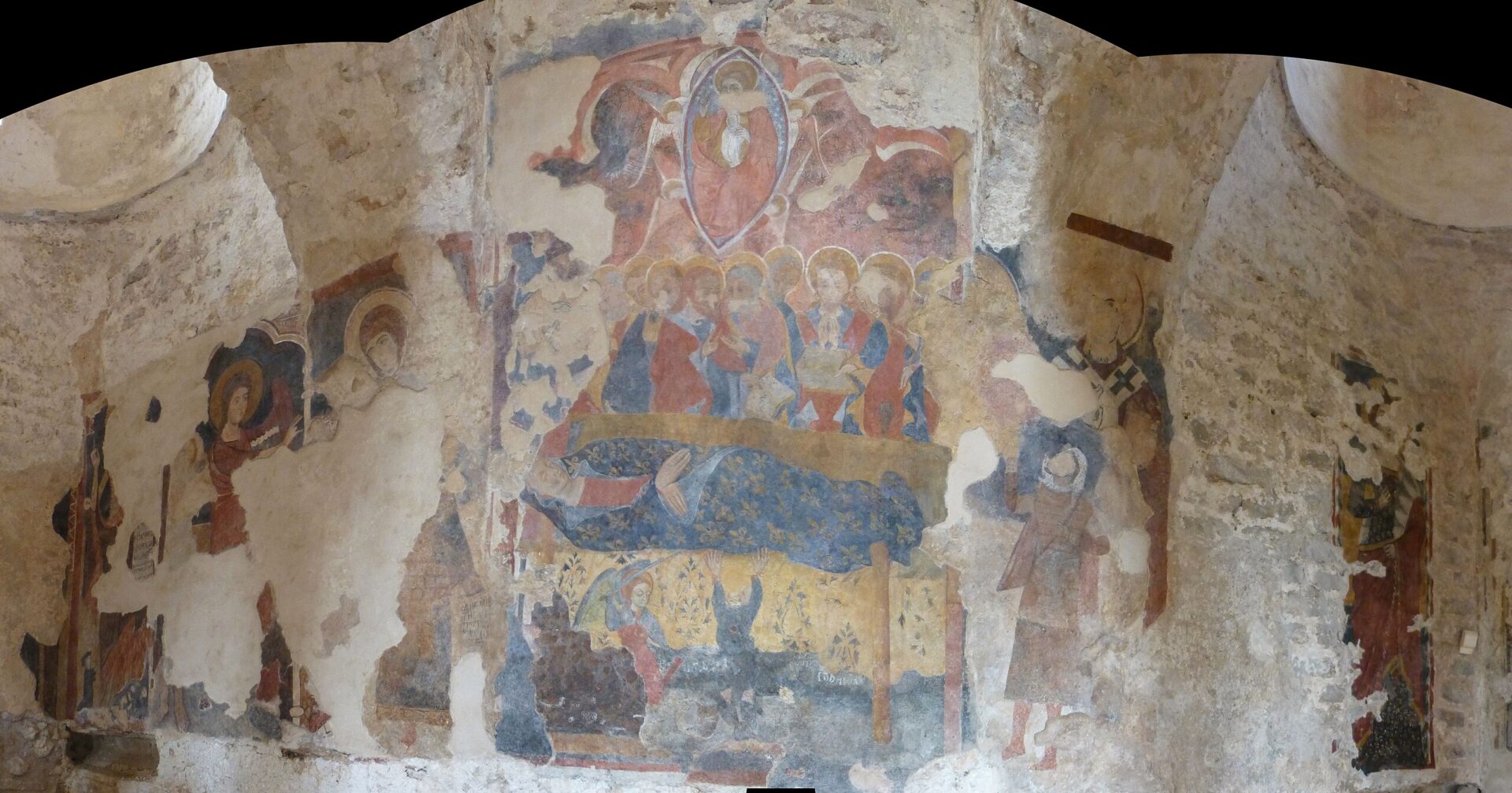
Unpacking the Iconic Architecture
Cattolica di Stilo’s architecture hits you with its Byzantine charm. The five domes stand out against the Calabrian sky, making the church a dream for anyone with a camera.
Hallmarks of Byzantine Influences
The cross-in-square design jumps out at you right away. I couldn’t stop staring at the five domes, set up in that classic quincunx pattern—one big dome in the middle, four smaller ones around it.
This isn’t just for looks; it’s packed with meaning, representing the four evangelists surrounding Christ.
Red brick gives the exterior a warm, earthy feel that pops against the hillside. Walking around, I noticed rounded arches and balanced proportions—pure Byzantine style.
The church is small, about 15 meters long, but it feels both cozy and important. Thick walls and those clever pendentives keep the domes standing strong.
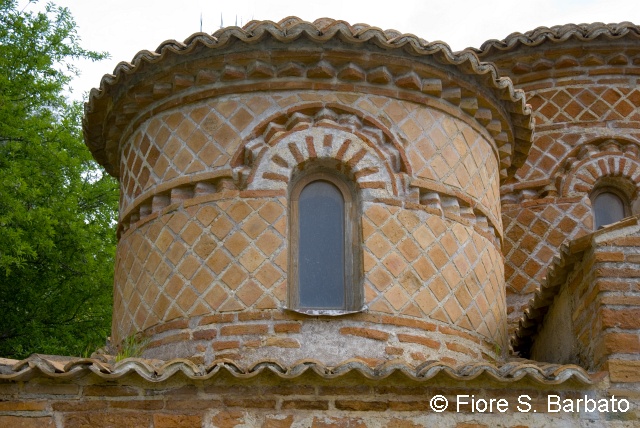
Mosaics and Artistic Treasures
Inside, you’ll find fragments of old frescoes. I spent ages squinting at the plaster, trying to make out saints and biblical scenes.
Most of the colors have faded, but there are still hints of deep blue and red if you look closely. Decoration is pretty sparse, in keeping with Eastern Orthodox tradition.
Light slips through tiny windows, casting dramatic shadows across the space.
Some of my favorite details:
- Geometric patterns carved into stone
- Painted crosses for protection
- Greek inscriptions telling stories of faith
Comparisons to Other Byzantine Wonders
Cattolica di Stilo might be tiny compared to Hagia Sophia, but you can see the same ideas at work—the dome system, the layout, the sense of space.
The Church of the Chora in Istanbul comes to mind too, with its mosaics and intimate scale. Stilo’s decorations are more restrained, but the atmosphere is just as powerful.
Churches in Trebizond (now Trabzon) also use the cross-in-square plan, but Stilo’s hillside setting gives it an edge. The domes rise above the mountains, perfect for dramatic photos.
Unlike some Byzantine churches that got converted into mosques, Cattolica di Stilo has stayed Christian all along.
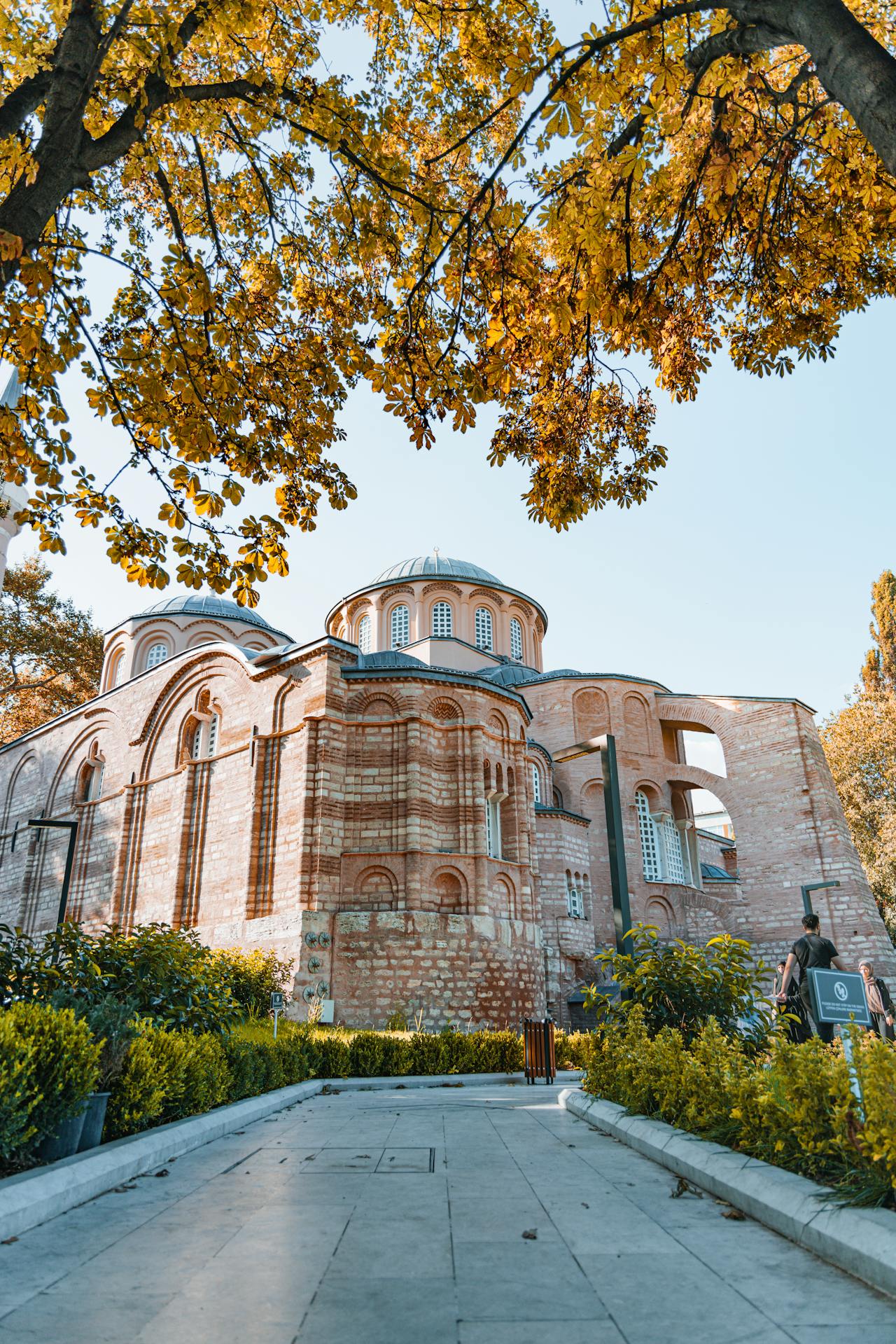
Photographing Five Domes on a Hillside
Photographing Stilo’s Byzantine church takes patience and a good eye for light. The five domes make a bold silhouette that shifts as the sun moves.
Golden Hour Drama: Light and Mood
If you show up an hour before sunset, you’ll see the church at its best. The golden light washes over the domes, creating rich shadows and highlighting every detail.
Morning brings a softer mood, especially on the eastern side. On cloudy days, I grab a polarizer to make the building pop against the sky.
Seasons matter too. Summer gives you longer evenings to play with light, while winter’s low sun stretches shadows across the hill. I always check sunset times before heading out.
Weather can make or break your shot. A stormy sky behind the domes looks epic, but you’ve got to move fast before the rain hits.
Best Vantage Points and Hillside Views
My go-to spot is the northwestern path, about 200 meters away. From there, you get the whole church framed against the hillside.
For something different, I hike up the opposite hill in the morning. It’s a climb, but the view—with the town of Stilo in the background—is worth it.
Top three vantage points:
- Northwestern path (afternoon light)
- Southern hillside (sunrise)
- Eastern ridge (add olive trees to the foreground)
Take your time. I usually spend a couple of hours walking around, trying out new angles.
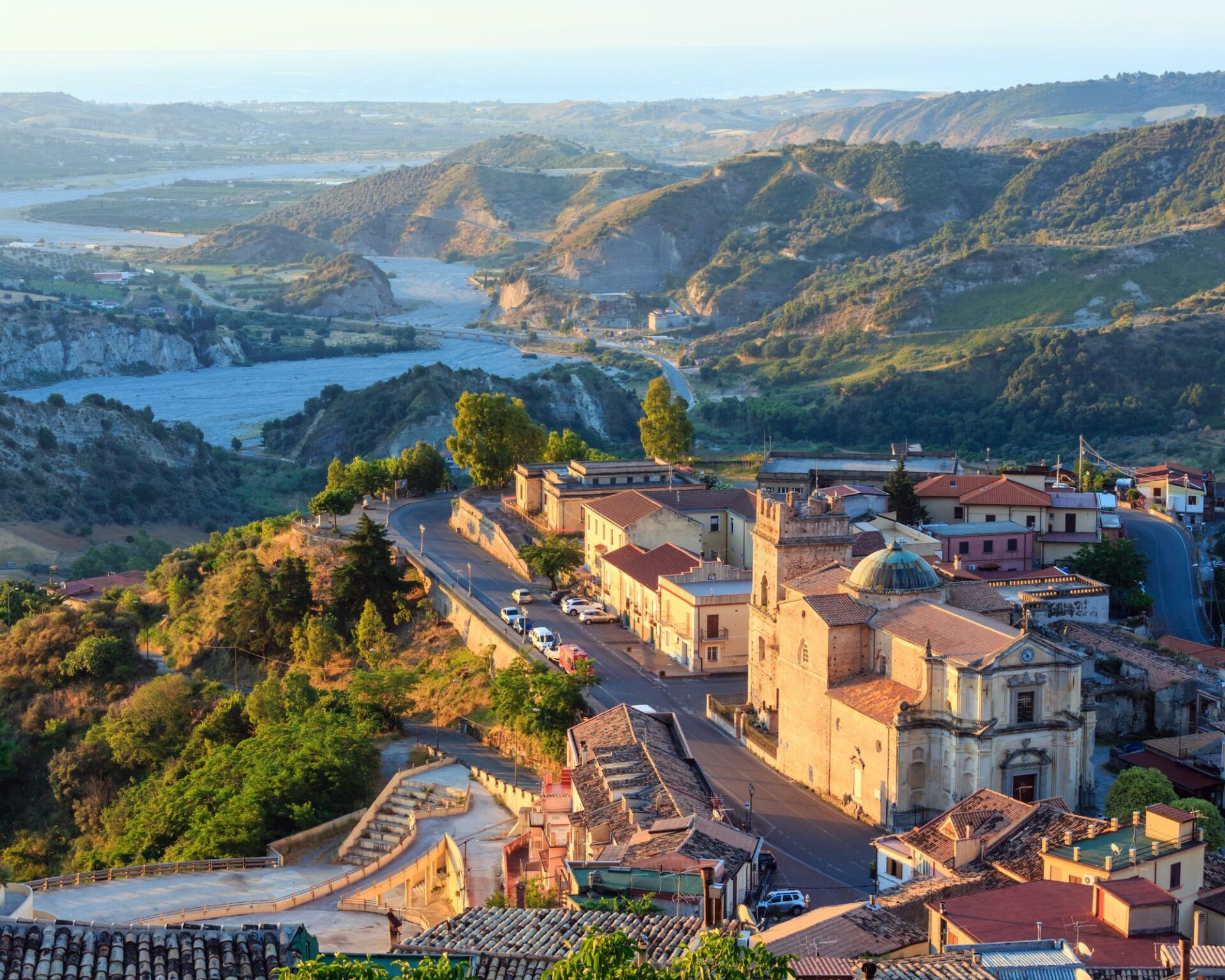
Capturing Details: Tips for Composition
For close-ups of the domes, I like a wide-angle lens (16-35mm). It exaggerates the curves and pulls in the sky.
I look for natural frames—cypress trees, stone arches, whatever adds a layer of depth. These little touches make the photos feel more “Calabrian.”
Some tips:
- Add a person for scale
- Use wildflowers in spring for the foreground
- Shoot from below to make the domes look taller
- Catch reflections in puddles after rain
A tripod helps, especially in low light. The brickwork deserves to be sharp and detailed.
Travel Tips and Experiences in Stilo
Visiting Stilo’s Byzantine church isn’t complicated, but a bit of planning helps. Here’s what I’ve learned from my own trips.
How to Reach the Byzantine Jewel
The Cattolica di Stilo sits about 1.5 kilometers from town. Renting a car makes life easier since public transport is pretty limited in this part of Calabria.
If you’re on a budget, you can book a local taxi, but do it ahead of time. I once waited nearly an hour for a ride back!
The last stretch is a short walk uphill on a partly paved path. Good shoes and a bottle of water are musts, especially in the summer heat.
Best times to visit:
- Early morning (8-10am): Quiet, great light
- Late afternoon (4-6pm): Warm tones on the brick domes
Navigating Local Inconveniences
Stilo’s charm comes with a few quirks. The church has set hours (9am-1pm, 3pm-6pm) but sometimes closes unexpectedly. I check their Facebook page before heading out.
Restrooms are scarce near the church. The best bet is a café at the base of the hill—buy a coffee and you can use their facilities.
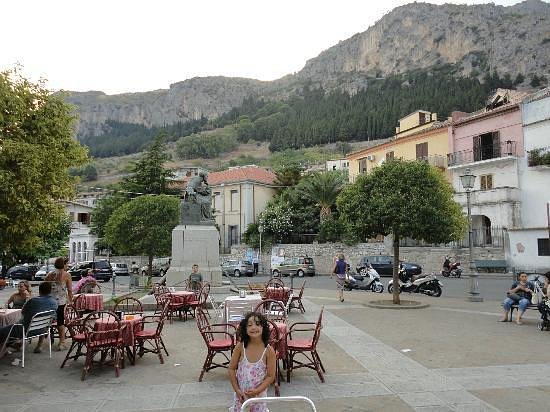
The path can be tough for anyone with mobility issues. I saw a few older visitors struggle with the last bit. If that’s a concern, reach out to local services for help.
Shade is hard to find in summer. I’m always glad to have a hat and extra water.
Nearby Cafés, Restaurants, and Salons
Stilo’s food scene is down-to-earth and delicious. Ristorante La Collinetta is my top pick—try their hazelnut-crusted seafood pasta.
For a quick snack, Caffè Bizantino has great espresso and local pastries. The owner is friendly and happy to share tips.
Don’t skip Agave Beauty Salon and Café—it’s a quirky spot where you can sip granita and get a manicure. They also sell handmade souvenirs from local artisans.
If you want dinner, call ahead during tourist season. Most places close for a few hours in the afternoon.
Preservation and Continuing Legacy
Stilo’s Byzantine church stands as a testament to careful preservation and deep local pride. Those five domes keep drawing in visitors, while the people of Stilo work to keep their traditions alive and honor this unique piece of Calabria’s past.
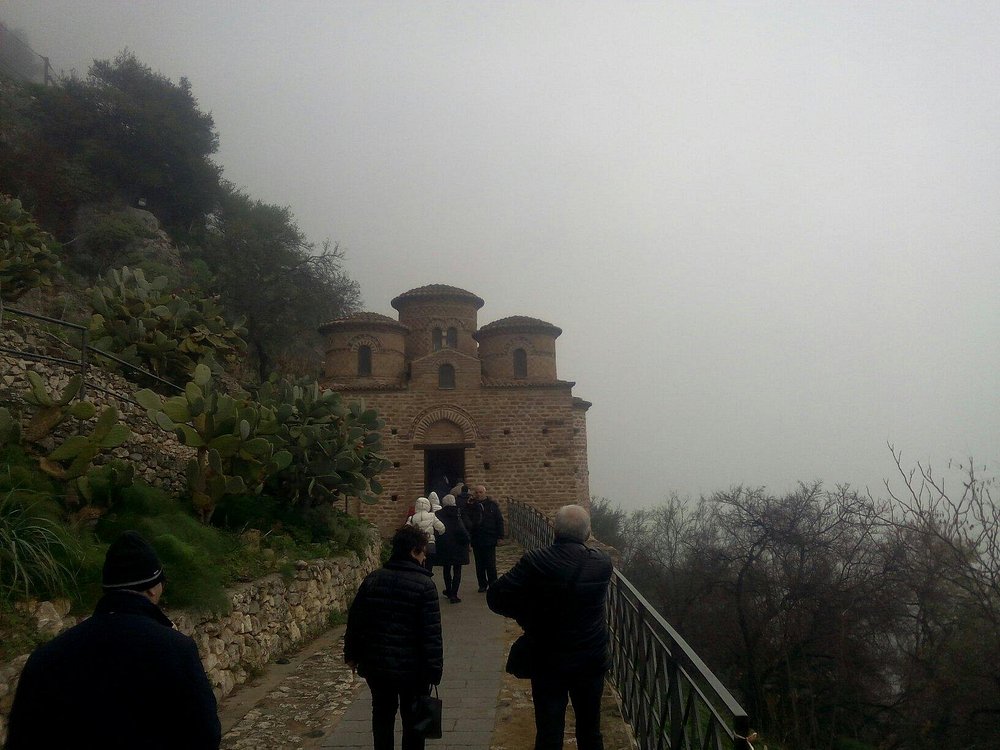
Conservation Efforts and Archives
I stopped by the church right in the middle of a big conservation project. Watching the team work, I couldn’t help but feel impressed by their attention to detail.
Specialists scrubbed away centuries of soot from the interior frescoes. As they worked, bright colors started to appear—colors that had stayed hidden for generations.
The regional heritage office keeps a huge archive on the church’s history. I saw shelves full of old photographs, some dating all the way back to the early 1900s.
These records help the team restore the church accurately. Without them, I imagine it would be nearly impossible to get the details right.
One conservator chatted with me about their methods for stabilizing the old mortar. She said, “It’s like performing surgery on history,” and showed how they mix materials to match the original Byzantine compounds.
Funding’s always a headache. Preservation efforts depend on government grants, private donations, and sometimes creative leasing for special events.
Modern Community and Local Traditions
Local residents keep strong ties to the church through annual festivals. These events mix religious rituals with lively cultural celebrations.
Every May, I join dozens of families trekking uphill to the church for a feast day that’s been part of our lives for generations.
The town museum proudly shows off artifacts and stories that elderly community members have shared. I chatted with the curator, and she pointed out how volunteers always put the community first rather than seeking personal credit.
Schools around here make sure students visit the church as part of their lessons. One teacher even started a project where students collect stories from their grandparents about what the church means to them.
Artists and photographers often gather at the site. They love capturing how the church changes with the seasons.

